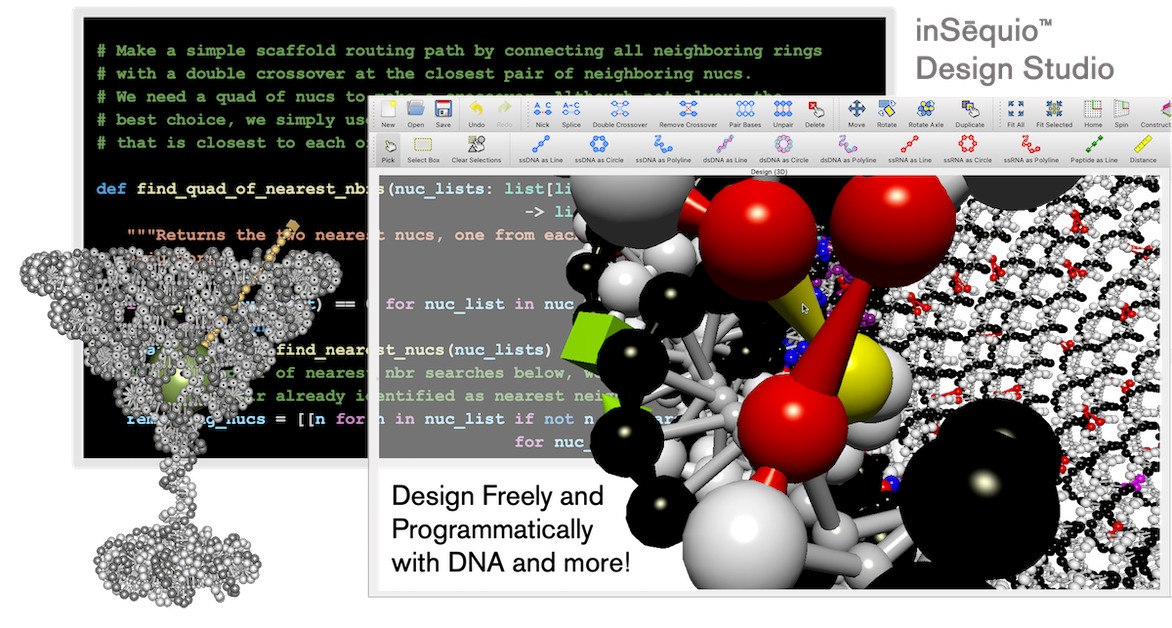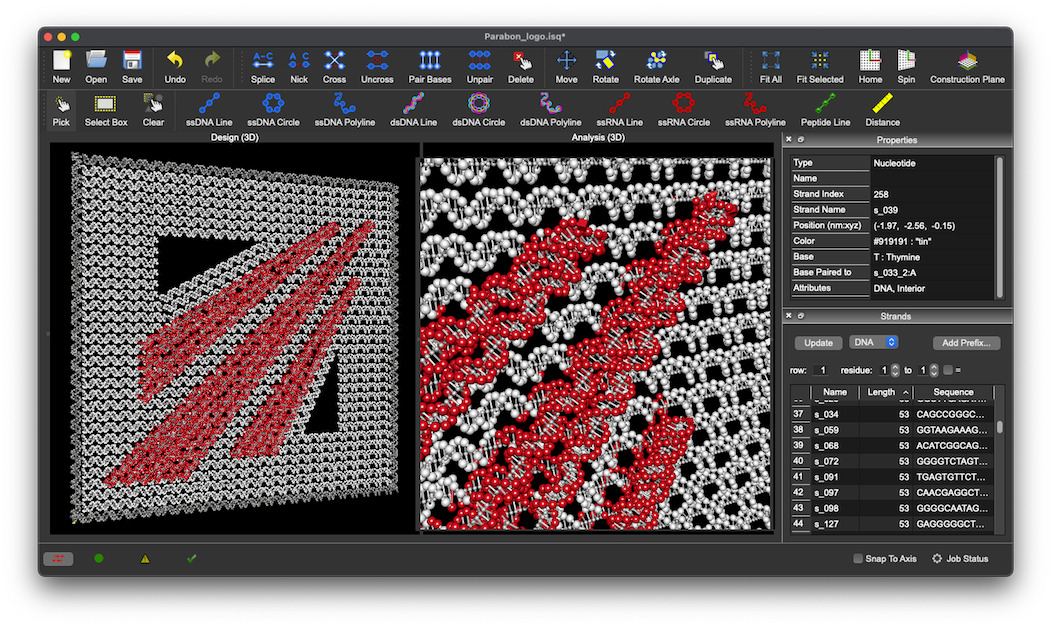2 Apr 2024
FOR IMMEDIATE RELEASE

inSēquio supports both freeform graphical editing and programmatic design with Python

Parabon's logo designed with inSēquio from DNA strands. Laid end-to-end, approximately 3,500 instances of the 90nm x 90nm logo would be needed to wrap around the average human hair.
Reston, VA — Parabon NanoLabs, a recognized leader in DNA technology innovation, announced the general availability of the inSēquio Design Studio software at the 2024 Mid-Atlantic DNA Nanotechnology (MADNano) Symposium, hosted at George Mason University's Science and Technology Campus. Before an engaged audience of DNA nanotechnologists, Parabon's CEO, Dr. Steven Armentrout, showcased the groundbreaking computer-aided design (CAD) software, the first commercial-grade application specifically tailored for this burgeoning field.
CEO Parabon NanoLabs
Beyond its biological use for storing genetic information, DNA excels as a nanoscale construction material due to its capacity for self-assembly, programmability, and ability to organize other molecular species. Similar to industrial CAD in automobile design, inSēquio equips nanoengineers with the tools to design and analyze complex DNA/RNA molecular devices, including biosensors, smart drug nanocarriers, and nanorobots. Unlike other design applications in the field, inSēquio provides both a 3D graphical user interface for freeform design tasks, as well as a Python application programming interface (API) for programmatic design. Together, these capabilities offer an unparalleled degree of flexibility, precision and control, which heralds a new era in the creation of structured DNA devices.
Divita Mathur, Assistant Professor of Chemistry at Case Western Reserve University, said "There's a great need for integrated and well-supported design software in our field. Our beta testing with inSēquio was highly encouraging, suggesting it can fill this void."
Reflecting on historical parallels, Armentrout remarked, "Here in 2024, as we launch inSēquio, it's interesting to note that 24 years ago, the world was moving past Y2K. And, 24 years before that, almost to the day, a couple of Steves first presented their humble invention, the Apple I, to a small group of like-minded enthusiasts at the Homebrew Computer Club — a moment of innovation we aspire to echo with inSēquio." He emphasized the transformative power of making advanced technology both accessible and user-friendly. "Our goal is to integrate powerful design and analysis tools into a single, well-supported application that delivers tangible value to the community, enhancing innovation, collaboration, and advancement in the field." Reflecting on the demonstration, Armentrout added, "I hope we can look back and say this was a Homebrew moment for structured DNA design."
With a nod to the late founder of the field, Armentrout later said, "I wish Ned [Nadrian Seeman] was here, so I could give him a personal demonstration." A technical article detailing inSēquio Design Studio's features is available on the BioRxiv preprint server, accessible via DOI https://doi.org/10.1101/2024.03.27.586810.
Parabon is offering a free 30-day trial of inSēquio Design Studio, which is available at https://parabon.com/insequio.
Development of inSēquio has been supported, in part, by SBIR and STTR research grants and contracts from the National Science Foundation, U.S. Army Research Office, National Institutes of Health (specifically, the National Cancer Institute, National Institute of Allergy and Infectious Disease and the National Institute for General Medical Sciences), U.S. Army Chemical Biological Center, Defense Threat Reduction Agency, and with funding from the Virginia Innovation Partnership Corporation.
Paula Armentrout
Parabon NanoLabs, Inc.
+1 703-689-9689 ext. 250
media@parabon.com


